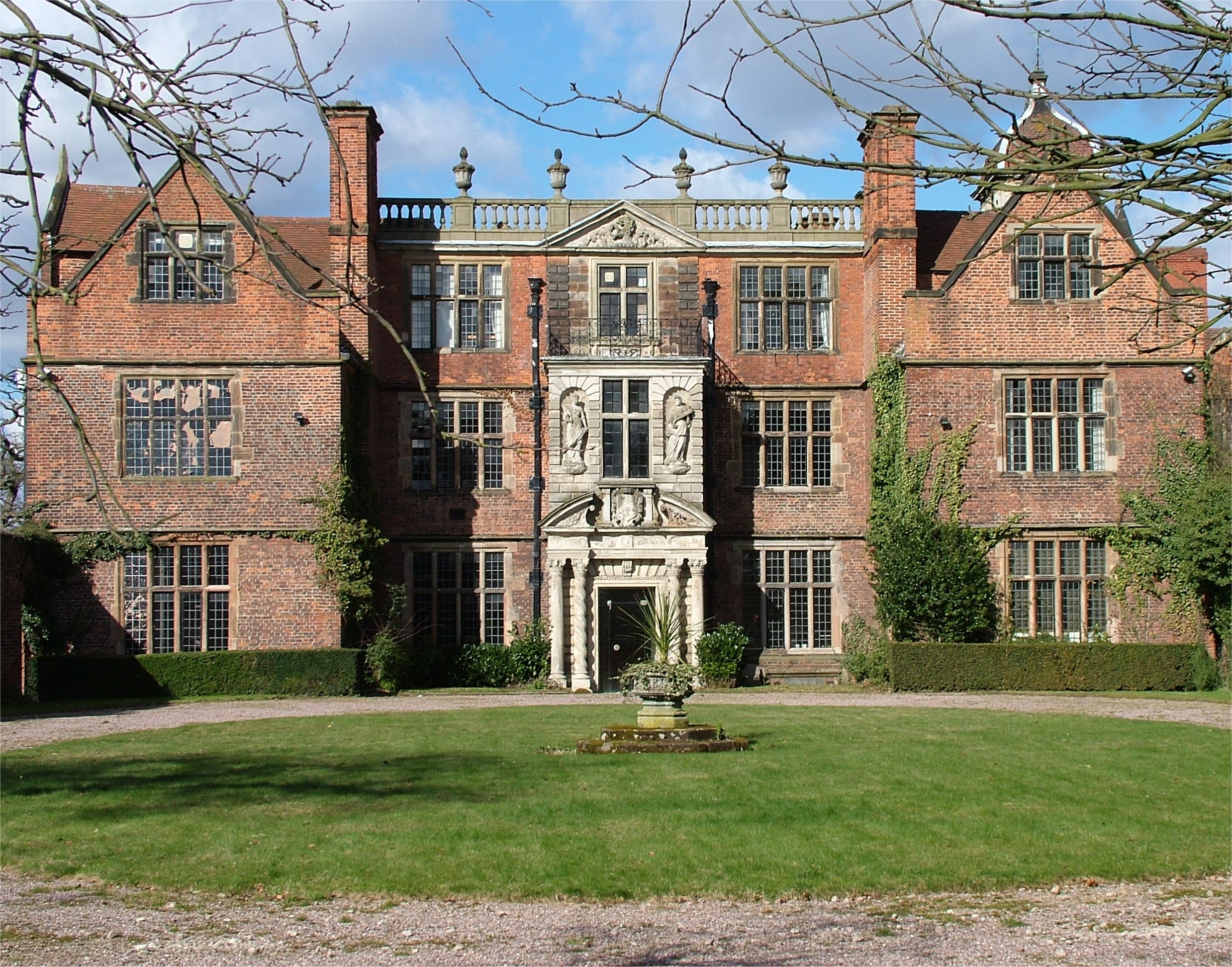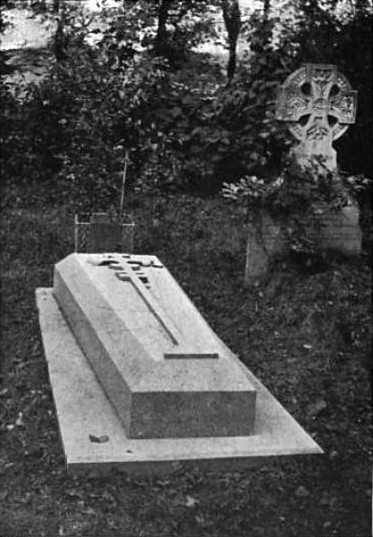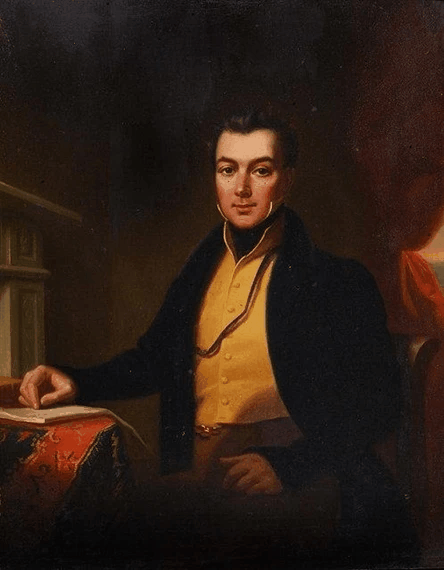|
Bredfield House
Bredfield House (or White House as it was also known) was a now-demolished country house situated in the village of Bredfield, around 2 miles north of Woodbridge, Suffolk, Woodbridge, Suffolk, England, United Kingdom. It was a Jacobean architecture, Jacobean building and was traditionally the seat of the Jenney family. History In the seventeenth century Bredfield belonged to the Marryot family, who built the house. It passed to the Jenney family in 1683 by the marriage of Dorothy, daughter and co-heiress of Robert Marryott, to Edmund, the second son of Sir Robert Jenney. A later Edmund Jenney was High Sheriff of Suffolk for 1740. The house is best known as the birthplace Edward FitzGerald (poet), Edward FitzGerald (1809–1883), who translated the Rubaiyat of Omar Khayyam, Rubàiyàt of Omar Khayyàm. Edward's father, John Fitzgerald (1775–1852), John Fitzgerald, had rented it in 1801 from the Jenneys on his marriage to Edward's mother. Edward described it in his poem ... [...More Info...] [...Related Items...] OR: [Wikipedia] [Google] [Baidu] |
Bredfield
Bredfield is a small village and civil parish in the England, English county of Suffolk. It is situated just off the A12 road (Great Britain), A12, two miles north of Woodbridge, Suffolk, Woodbridge. Another village, Dallinghoo, is to the north, and to the west is Boulge, a small hamlet. The population of Bredfield at the 2001 census was 308 (including 10 students living outside the village), the population increasing to 340 at the 2011 Census. The first mention of Bredfield is in the Domesday Book of 1086, as Brēde Felda (or various permutations thereof) in Old English, meaning "broad clearing". The historic building Bredfield House, the birthplace of poet and writer Edward FitzGerald (poet), Edward FitzGerald, used to be situated in the village; however, it was damaged during World War II and has since been demolished. There is a historic non-denominational chapel (built in 1902) and a historic parish church (St Andrew's, dating from the 13th century). The Castle Inn public ... [...More Info...] [...Related Items...] OR: [Wikipedia] [Google] [Baidu] |
Woodbridge, Suffolk
Woodbridge is a port town and civil parish in the East Suffolk District, East Suffolk district of Suffolk, England. It is up the River Deben from the sea. It lies north-east of Ipswich and around north-east of London. In 2011 it had a population of 7,749. The town is close to some major archaeological sites of the Anglo-Saxons, Anglo-Saxon period, including the Sutton Hoo burial ship. It is well known for its boating harbour and tide mill next to the River Deben, in the Suffolk & Essex Coast & Heaths National Landscape. Several festivals are held. As a "gem in Suffolk's crown" (according to The Suffolk Coast tourist site) it has been named the best place to live in the East of England. Etymology Historians disagree over the etymology of Woodbridge. ''The Dictionary of British Placenames'' (2003) suggests that it is a combination of the Old English wudu (wood) and brycg (bridge). The Sutton Hoo Society's 1988 magazine ''Saxon'' points out, however, that there is no suitable si ... [...More Info...] [...Related Items...] OR: [Wikipedia] [Google] [Baidu] |
Suffolk
Suffolk ( ) is a ceremonial county in the East of England and East Anglia. It is bordered by Norfolk to the north, the North Sea to the east, Essex to the south, and Cambridgeshire to the west. Ipswich is the largest settlement and the county town. The county has an area of and a population of 758,556. After Ipswich (144,957) in the south, the largest towns are Lowestoft (73,800) in the north-east and Bury St Edmunds (40,664) in the west. Suffolk contains five Non-metropolitan district, local government districts, which are part of a two-tier non-metropolitan county administered by Suffolk County Council. The Suffolk coastline, which includes parts of the Suffolk & Essex Coast & Heaths National Landscape, is a complex habitat, formed by London Clay and Crag Group, crag underlain by chalk and therefore susceptible to erosion. It contains several deep Estuary, estuaries, including those of the rivers River Blyth, Suffolk, Blyth, River Deben, Deben, River Orwell, Orwell, River S ... [...More Info...] [...Related Items...] OR: [Wikipedia] [Google] [Baidu] |
Jacobean Architecture
The Jacobean style is the second phase of Renaissance architecture in England, following the Elizabethan style. It is named after King James VI and I, with whose reign (1603–1625 in England) it is associated. At the start of James's reign, there was little stylistic break in architecture, as Elizabethan trends continued their development. However, his death in 1625 came as a decisive change towards more classical architecture, with Italian influence, was in progress, led by Inigo Jones. The style this began is sometimes called Stuart architecture, or English Baroque (though the latter term may be regarded as starting later). Courtiers continued to build large prodigy houses, even though James spent less time on summer progresses around his realm than Elizabeth had. The influence of Flemish and German Northern Mannerism increased, now often executed by recruited craftsmen and artists, rather than obtained from books as in the previous reign. There continued to be very little b ... [...More Info...] [...Related Items...] OR: [Wikipedia] [Google] [Baidu] |
The White House, Bredfield, Suffolk Postcard C
''The'' is a grammatical article in English, denoting nouns that are already or about to be mentioned, under discussion, implied or otherwise presumed familiar to listeners, readers, or speakers. It is the definite article in English. ''The'' is the most frequently used word in the English language; studies and analyses of texts have found it to account for seven percent of all printed English-language words. It is derived from gendered articles in Old English which combined in Middle English and now has a single form used with nouns of any gender. The word can be used with both singular and plural nouns, and with a noun that starts with any letter. This is different from many other languages, which have different forms of the definite article for different genders or numbers. Pronunciation In most dialects, "the" is pronounced as (with the voiced dental fricative followed by a schwa) when followed by a consonant sound, and as (homophone of the archaic pronoun ''thee'' ... [...More Info...] [...Related Items...] OR: [Wikipedia] [Google] [Baidu] |
High Sheriff Of Suffolk
This is a list of Sheriffs and High Sheriffs of Suffolk. The Sheriff is the oldest secular office under the Crown and is appointed annually (in March) by the Crown. The Sheriff was originally the principal law enforcement officer in the county and presided at the Assizes and other important county meetings. Most of the responsibilities associated with the post have been transferred elsewhere or are now defunct, so that its functions are now largely ceremonial. There was a single Sheriff serving the two counties of Norfolk and Suffolk until 1576. On 1 April 1974, under the provisions of the Local Government Act 1972, the title of Sheriff of Suffolk was retitled High Sheriff of Suffolk. Sheriff Pre-17th century 17th century 18th century 19th century 20th century High Sheriff 20th century 21st century See also High Sheriff of Norfolk and Suffolk References British History Online-List of Sheriffs for Suffolk {{DEFAULTSORT:High Sheriff Of Suffolk Suffolk ... [...More Info...] [...Related Items...] OR: [Wikipedia] [Google] [Baidu] |
Edward FitzGerald (poet)
Edward FitzGerald or Fitzgerald (31 March 180914 June 1883) was an English poet and writer. His most famous poem is the first and best-known English translation of '' The Rubaiyat of Omar Khayyam'', which has kept its reputation and popularity since the 1860s. Life Edward FitzGerald was born Edward Purcell at Bredfield House in Bredfield, some two miles north of Woodbridge, Suffolk, England, in 1809. In 1818, his father, John Purcell, assumed the name and arms of his wife's family, the FitzGeralds. His elder brother John used the surname Purcell-Fitzgerald from 1858. The change of family name occurred shortly after FitzGerald's mother inherited a second fortune. She had previously inherited over half a million pounds from an aunt, but in 1818, her father died and left her considerably more than that. The FitzGeralds were one of the wealthiest families in England. Edward FitzGerald later commented that all of his relatives were mad; further, that he was insane as well, but wa ... [...More Info...] [...Related Items...] OR: [Wikipedia] [Google] [Baidu] |
Rubaiyat Of Omar Khayyam
''Rubáiyát of Omar Khayyám'' is the title that Edward FitzGerald (poet), Edward FitzGerald gave to his 1859 translation from Persian language, Persian to English of a selection of quatrains (') attributed to Omar Khayyam (1048–1131), dubbed "the Astronomer-Poet of Persia". Although commercially unsuccessful at first, FitzGerald's work was popularised from 1861 onward by Whitley Stokes (Celtic scholar), Whitley Stokes, and the work came to be greatly admired by the Pre-Raphaelites in England. FitzGerald had a third edition printed in 1872, which increased interest in the work in the United States. By the 1880s, the book was extremely popular throughout the English-speaking world, to the extent that numerous "Omar Khayyam clubs" were formed and there was a " cult of the Rubaiyat". FitzGerald's work has been published in several hundred editions and has inspired similar translation efforts in English, Hindi and in many other languages. Sources The authenticity of the po ... [...More Info...] [...Related Items...] OR: [Wikipedia] [Google] [Baidu] |
John Fitzgerald (1775–1852)
John Fitzgerald (25 December 1775 – 18 March 1852) was a British Member of Parliament. He was born John Purcell, the son of John Purcell, a Dublin physician and his wife Eleanor, the daughter of John Fitzgerald of Waterford. The Purcells were an Anglo-Irish family who had arrived in England at the time of the Norman conquest and settled in Ireland by 1172. John Purcell, junior was educated at Trinity College Dublin (1790) and trained in the law at the Middle Temple (1792) and King's Inns (1793). He was called to the Irish bar in 1796, but never practised. He married his cousin Mary Frances in 1801, the daughter and heiress of his uncle John Fitzgerald of Little Island, Waterford, who also had estates at Pendleton in Lancashire and Gayton, Staffordshire. The couple lived at the Bredfield House, also known as the White House, Bredfield, near Woodbridge, Suffolk and had three sons and five daughters. In 1810 Mary Frances, whose elder brother had died in 1807, inherited her gre ... [...More Info...] [...Related Items...] OR: [Wikipedia] [Google] [Baidu] |
Hollesley Bay (Suffolk)
Hollesley Bay is a bay on the coast of Suffolk, England, near the village of Hollesley. Nelson brought his fleet here in 1801. See also * Hollesley Bay (HM Prison) HM Prison Hollesley Bay, known locally as Hollesley Bay Colony (to which signposts still point) or simply The Colony, is a Category D men's prison and Young Offender Institution, located in the village of Hollesley, about 8 miles (13 km) ... References Landforms of Suffolk Bays of England {{Suffolk-geo-stub ... [...More Info...] [...Related Items...] OR: [Wikipedia] [Google] [Baidu] |
Horatio Nelson
Horatio Nelson, 1st Viscount Nelson, 1st Duke of Bronte ( – 21 October 1805) was a Royal Navy officer whose leadership, grasp of strategy and unconventional tactics brought about a number of decisive British naval victories during the French Revolutionary and Napoleonic Wars. He is widely regarded as one of the greatest naval commanders in history. Nelson was born into a moderately prosperous Norfolk family and joined the navy through the influence of his uncle, Maurice Suckling, a high-ranking naval officer. Nelson rose rapidly through the ranks and served with leading naval commanders of the period before obtaining his own command at the age of 20, in 1778. He developed a reputation for personal valour and a firm grasp of tactics, but suffered periods of illness and unemployment after the end of the American War of Independence. The outbreak of the French Revolutionary Wars allowed Nelson to return to service, where he was particularly active in the Mediterranean Sea. He fou ... [...More Info...] [...Related Items...] OR: [Wikipedia] [Google] [Baidu] |
V-1 Flying Bomb
The V-1 flying bomb ( "Vengeance Weapon 1") was an early cruise missile. Its official Reich Aviation Ministry () name was Fieseler Fi 103 and its suggestive name was (hellhound). It was also known to the Allies as the buzz bomb or doodlebug and (maybug). The V-1 was the first of the (V-weapons) deployed for the terror bombing of London. It was developed at Peenemünde Army Research Center in 1939 by the at the beginning of the Second World War, and during initial development was known by the codename "Cherry Stone". Due to its limited range, the thousands of V-1 missiles launched into England were fired from V-1 flying bomb facilities, launch sites along the French (Pas-de-Calais) and Dutch coasts or by modified Heinkel He 111 aircraft. The Wehrmacht first launched the V-1s against London on 13 June 1944, one week after (and prompted by) Operation Overlord, the Allied landings in France. At times more than one hundred V-1s a day were fired at south-east England, 9,521 in t ... [...More Info...] [...Related Items...] OR: [Wikipedia] [Google] [Baidu] |






